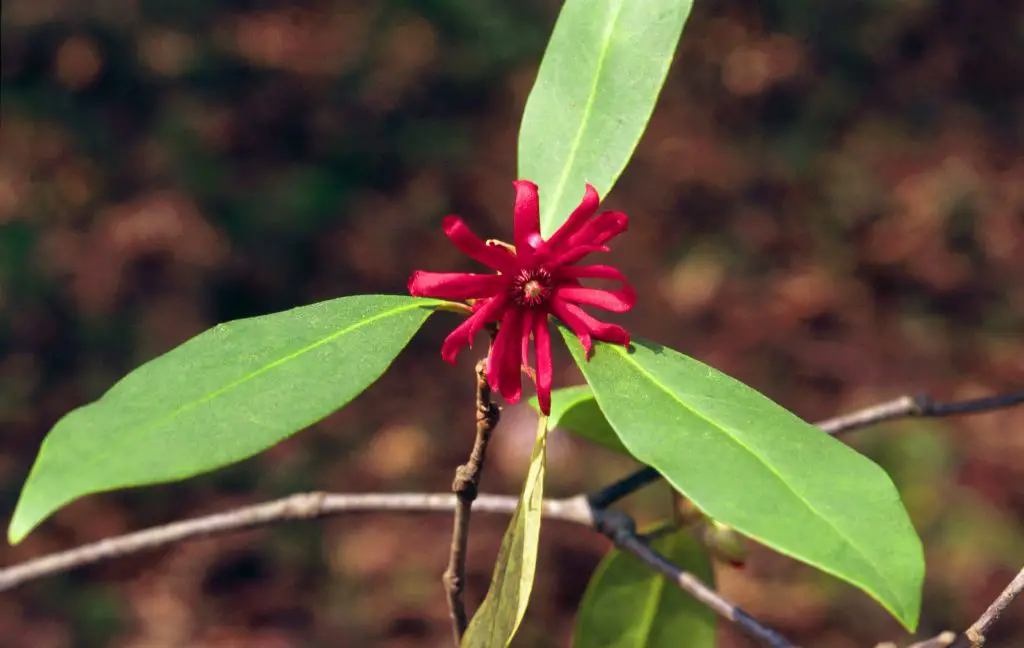Esca and Illicium are two botanical terms that often pique the interest of both botanists and culinary enthusiasts alike. While these terms may sound obscure to the uninitiated, their significance spans various aspects of plant science and gastronomy. Esca primarily refers to a plant disease affecting grapevines, whereas Illicium relates to a genus of flowering plants known for their star-shaped fruits.
Esca and Illicium, though seemingly unrelated, play distinct roles in their respective domains. Esca affects the viticulture industry by impacting grapevine health, showing symptoms like leaf discoloration and vine death. On the other hand, Illicium, particularly the species Illicium verum, commonly known as star anise, is celebrated in the culinary world for its aromatic seeds which are a staple in spice cabinets globally.
Understanding the characteristics, uses, and impacts of Esca and Illicium enriches our appreciation of plant diseases and culinary herbs. While Esca teaches us about the fragility of ecosystems and the need for sustainable farming practices, Illicium opens a window into the rich traditions of culinary arts, showcasing how a single spice can influence a myriad of dishes across various cuisines.

Basic Concepts
What is Esca?
Esca, often referred to as grapevine decline, is a disease affecting grapevines worldwide. It is caused by a combination of fungal infections that penetrate vine tissues, typically through pruning wounds or other mechanical injuries. The disease manifests through several symptoms, such as leaf discoloration, where leaves may develop yellow and white chlorotic patterns, and the wood under the bark may show brown to black streaks. Another striking symptom is the “apoplexy” phenomenon, where vines suddenly wilt and die in the midst of the growing season. This disease not only reduces the yield of affected vines but can also lead to the premature death of the vine, posing a significant threat to vineyard productivity.
What is Illicium?
Illicium is a genus of flowering plants in the family Schisandraceae, commonly known for species such as Illicium verum, the star anise. Native to parts of Asia, these plants are admired both for their ornamental beauty and culinary value. Illicium verum, in particular, is renowned for its star-shaped fruit, which contains seeds that emit a strong, anise-like fragrance. This spice is extensively used in culinary traditions around the world, especially in Asian cuisine. The plant itself is an evergreen shrub or small tree, displaying glossy, leathery leaves and solitary, star-shaped flowers.
Botanical Profiles
Esca Botany
Esca affects a wide range of grapevine species. The disease is predominantly found in older vineyards, as the incidence and severity of symptoms increase with the age of the vine. However, young vineyards are not immune, especially when planted in fields previously hosting infected vines. The habitat and spread of Esca are influenced by climatic conditions, with higher prevalence in regions with wet springs and hot, dry summers. Managing this disease requires an integrated approach, including cultural practices, chemical treatments, and the use of resistant grapevine varieties.
Illicium Botany
Illicium plants are native to East and Southeast Asia, with some species found in North America. These plants prefer moist, acidic soils found in shaded, forested areas. The most commercially important species, Illicium verum, grows as a medium-sized evergreen tree. It thrives in tropical to subtropical climates, where it can be cultivated both for its culinary uses and ornamental value. The botanical interest in Illicium extends beyond its culinary use, as the plant is also studied for its potential medicinal properties and essential oils.
Culinary Uses
Esca in Cuisine
While Esca itself is a disease and not used in cuisine, it significantly impacts the wine industry. Wines made from vines affected by Esca may exhibit off-flavors, sometimes described as “bitter” or “metallic,” which can alter the quality and taste profile of the wine. As such, understanding and managing this disease is crucial for maintaining the standard and flavor of wines.
Illicium in Cuisine
Illicium verum, or star anise, plays a pivotal role in culinary applications. Its uses include:
- Flavoring Agent: Star anise is a dominant spice in Chinese five-spice powder, where it contributes a sweet and spicy flavor that is integral to many Chinese dishes. It is also used in Vietnamese pho, a noodle soup that is rich in flavor and aroma.
- Baking and Sweets: In Western cuisines, ground star anise is occasionally used in baking, especially in recipes for cookies and pastries where a subtle licorice flavor is desired.
- Beverages: Beyond solid foods, star anise is commonly used to flavor teas and alcoholic beverages, including anise-flavored liquors such as Sambuca and Pastis.

Health Benefits
Benefits of Esca
Although Esca is primarily known as a destructive vine disease, it indirectly contributes to research in plant pathology and agricultural practices. The study of Esca has advanced our understanding of plant diseases, leading to better management practices that can be applied to a variety of crop diseases. This research is vital for developing sustainable agricultural technologies and ensuring food security.
Benefits of Illicium
Illicium verum, commonly known as star anise, is packed with an impressive array of health benefits. Rich in antioxidants and vitamins A and C, it supports immune function and helps fight off pathogens. Traditional medicine systems, such as Chinese and Ayurvedic medicine, utilize star anise to treat a variety of ailments:
- Digestive Health: It is often used to relieve abdominal pain, bloating, gas, indigestion, and constipation.
- Respiratory Benefits: Anethole, the active compound in star anise, is effective in loosening mucus and easing coughs.
- Antiviral Properties: Recent studies suggest that star anise has antiviral capabilities, particularly against influenza viruses.
Cultural Significance
Esca Cultural Impact
While Esca is not celebrated culturally, its impact is significant in the wine-making regions where it is prevalent. It shapes vineyard management practices and has a profound effect on the economic aspects of wine production. In regions like Europe, where tradition and wine are deeply intertwined, managing Esca is crucial for preserving both the quality of wine and the cultural heritage of vine-growing.
Illicium Cultural Impact
Illicium has a rich cultural history, especially in Asia. Star anise is not only a culinary staple but also an element of religious and spiritual practices. In Chinese culture, it is considered a symbol of luck and is often used in rituals and celebrations. The spice’s distinctive shape and aroma have made it a symbol of quality and authenticity in foods and traditional remedies.
Comparison and Contrast
Key Differences
Botanical Differences
Esca and Illicium differ greatly in their botanical aspects. Esca is a disease affecting the vascular system of grapevines, while Illicium refers to a genus of evergreen trees and shrubs known for their aromatic seeds. These fundamental differences define their roles in agriculture and horticulture.
Culinary Applications
Culinary use is another area where Esca and Illicium diverge. Esca, being a disease, has no culinary applications and is a concern for viticulture. Illicium, however, is widely used in cooking and beverages, providing a licorice-like flavor that is essential in many Asian and international dishes.
Similarities
Despite their differences, both Esca and Illicium impact agriculture. Both require careful management to maintain plant health and productivity—Esca through disease management in vineyards, and Illicium through sustainable harvesting practices to ensure the availability of its valuable seeds.
Sustainability and Conservation
Esca Conservation Efforts
Efforts to combat Esca focus on sustainable vineyard management practices:
- Resistant Varieties: Developing and cultivating grape varieties resistant to Esca.
- Cultural Practices: Modifying pruning and watering techniques to reduce disease stress.
- Biological Control: Researching natural predators and antagonists to the fungi that cause Esca.
Illicium Conservation Efforts
Conservation of Illicium involves protecting its natural habitat and promoting sustainable harvesting methods to prevent overexploitation:
- Habitat Protection: Ensuring the conservation of forests where Illicium grows to preserve its natural environment.
- Sustainable Harvesting: Implementing guidelines for harvesting practices that do not harm the overall health of the plant populations.
Frequently Asked Questions
What is Esca?
Esca is a complex grapevine disease caused by a combination of fungal infections. It manifests in vines through symptoms such as tiger-stripe leaf patterns and can lead to the gradual decline and eventual death of the affected plants.
How is Illicium used in cooking?
Illicium, particularly the star anise, is used extensively in cooking for its strong, anise-like flavor. It is a key ingredient in many Asian dishes, especially in Chinese five-spice powder, and is also used in infusions and to flavor liqueurs.
Can Esca affect any type of grapevine?
Esca can affect a variety of grapevine species, though its prevalence and severity can vary depending on the vine’s age, the climate, and how the vineyard is managed.
What are the health benefits of Illicium?
Illicium verum, or star anise, contains several compounds beneficial for health, including antioxidants and vitamins. It is traditionally used to treat digestive issues, relieve flu symptoms, and as a remedy for colic in infants.
Are there any sustainable practices to manage Esca?
Sustainable practices to manage Esca include selecting resistant vine varieties, improving soil health, managing pruning wounds to minimize infection, and reducing stress on vines through appropriate water and nutrient management.
Conclusion
Esca and Illicium represent intriguing but vastly different aspects of botany and cuisine. While Esca challenges viticulturists with its detrimental effects on grapevines, Illicium enriches culinary traditions with its aromatic contributions. Both, however, underscore the importance of plant health in ecological and human contexts.
The exploration of Esca and Illicium not only broadens our understanding of plant pathology and gastronomy but also highlights the interconnectedness of nature and human culture. As we delve deeper into the specifics of each, we gain a greater appreciation for the delicate balance required to sustain and enhance our natural and culinary environments.

